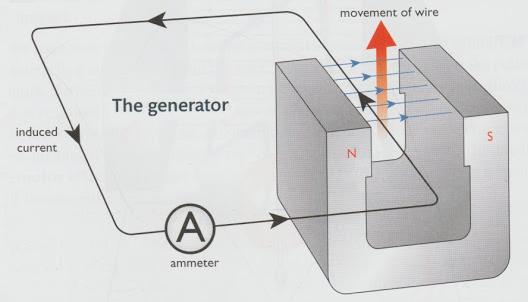Just consider a single conductor connected to an ammeter: -
So, if the conductor is moving upwards (as shown), Fleming's right hand rule tells us that current will flow into the page (as shown): -
Just align the "hand" so that your index finger is pointing left to right and is corresponding with the field lines from north to south in the top picture.
Now, if the force was downwards you would have to turn your hand upside down to keep the field in the same direction but your thumb would be pointing down. This means your middle finger (current) is pointing outwards from the page.
So that's the currents but what drives that current? An induced voltage drives the current and that has a polarity that must reverse direction to drive current in the opposite direction.
If the conductor CD rotates in counterclockwise direction what will be the polarity of the conductor 'CD' on its terminnal?
If CD is moving down through the magnetic field and is beginning this process at the top (as shown in the OP's diagram), then a voltage is induced that pushes current in the direction D to C. Notice that rotation direction is irrelevant because the same voltage (amplitude and polarity) will be produced when the wire moves downwards through the magnetic field irrespective of whether it takes a counter clockwise or clockwise route.


